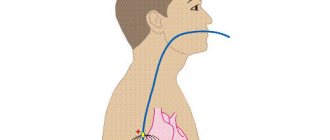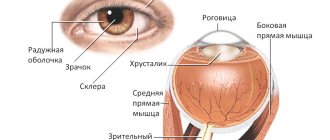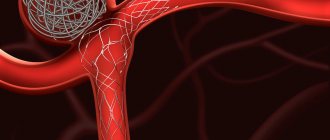Causes of atonic constipation
The causes of atonic constipation include the following factors:
- abnormalities of intestinal development;
- diseases of the endocrine system, changes in hormone levels (during pregnancy, menopause, etc.);
- neurological disorders;
- spinal cord injuries;
- taking medications that affect intestinal motility.
The cause of atonic constipation is a sedentary lifestyle. It is not necessary to have a sedentary job - atonic constipation also occurs after injuries and operations, when it is necessary to adhere to bed rest. Other possible causes include intoxication, exacerbation of inflammatory diseases, depression, bad habits, and infectious diseases.
A number of medications change muscle tone; antispasmodics, analgesics, antidepressants, some hormonal drugs, and medications that affect the transmission of nerve impulses can weaken it.
So-called idiopathic constipation has no known cause. Atonic constipation is often idiopathic in nature.
It is believed that intestinal dyskinesia is characteristic of functional constipation and irritable bowel syndrome with their predominance. But the slow movement of contents through the colon is associated with pathologies of the muscles and nervous system. There are two criteria by which an inert, or lazy, bowel is determined: resistance to laxatives and instrumental confirmation of slowing.
Diagnosis and treatment of intestinal dyskinesia
Since the symptoms of intestinal dyskinesia are similar to those of other ailments of the digestive system, it is quite difficult to establish an accurate diagnosis without special diagnostic procedures. That is why, before prescribing treatment, the gastroenterologist directs the patient to undergo tests and examination using special medical equipment.
It is mandatory to examine stool for dysbacteriosis and occult blood. Endoscopy, coprological diagnostics, irrigoscopy, and colonoscopy may be prescribed. After the diagnosis is confirmed and other diseases of the digestive system with similar symptoms are excluded, the doctor selects therapy individually for each patient.
Regardless of the form of intestinal dyskinesia, treatment includes diet, psychotherapy, drug therapy and physical therapy. If increased muscle tone is diagnosed, antispasmodics may be prescribed. With weakened tone, pharmacological drugs that enhance intestinal motility, as well as choleretic drugs and enzymes, are indicated. Long-term constipation is treated with herbal laxatives. If necessary, psychotropic drugs (neuroleptics, tranquilizers and antidepressants) are prescribed to normalize the patient’s psychological state.
For systematic diarrhea, medications with an adsorbent and astringent effect are prescribed. In addition, during the treatment of dyskinesia, patients may be prescribed non-drug treatment: microenemas with infusions and decoctions of herbs, acupuncture, paraffin baths, and so on.
Symptoms of atonic constipation
Symptoms include bloating, flatulence, abdominal pain, intestinal colic, and absence of intermediate urges between bowel movements. Researchers Shulpekova and Ivashkin in their scientific work indicate that “hypotonic or atonic functional constipation is associated with loss of tone of the colon. In this case, the delay in defecation can reach 5–7 days, the feces can be large in volume and loose in consistency” (Shulpekova, Ivashkin, 2004, p. 49).
However, this does not mean that dry and dense, fragmented feces cannot be observed. Stagnation of feces leads to the absorption of water from them, as a result of which the consistency of the stool changes. Often the act of defecation is accompanied by severe pain.
The characteristic symptoms of atonic constipation include the following:
- Bloating, flatulence. They develop against the background of stagnation of feces and excessive absorption of water from them.
- Pain in different parts of the abdomen. Often associated with gas formation, they can resemble intestinal colic - they appear periodically, without clear localization.
- Absence of intermediate urges between acts of defecation.
- Pain in the rectum. From time to time, due to overstretching of the rectal ampulla, cramping pain may occur.
There is a high probability of developing proctological complications, so blood and mucus are often present in the stool. If such symptoms occur, you should consult a doctor immediately.
Other symptoms are associated with general intoxication of the body with feces. Increased absorption of toxins in the colon leads to fatigue, pale skin, sweating, dizziness, decreased appetite, and nausea. These are nonspecific manifestations of poisoning, so they can persist for many years, and the person simply has no idea what is causing this feeling.
Complications of constipation
Atonic constipation, like other types of bowel movement disorders, can lead to serious complications. In the long term, they affect the health of the cardiovascular system, increase the risk of strokes and heart attacks, malignant intestinal tumors, reduce resistance to infections, and stimulate the exacerbation of allergic diseases.
Complications such as hemorrhoids, anal fissures, proctitis and paraproctitis can occur even against the background of one episode of constipation if there is a predisposition.
Quite quickly, against the background of prolonged constipation, dysbiosis develops - a change in the balance of intestinal microflora can further aggravate the problem, lead to a deficiency of vitamins and minerals, and a general weakening of the body. Therefore, it is important to consult a doctor in a timely manner to correct the problem.
Features of treatment
Treatment of atonic constipation is complex. There are several approaches to drug therapy:
- motility regulators, enterokinetics, and other agents. They allow you to regulate intestinal motility by correcting the tone of the intestinal muscles.
- Drugs that indirectly affect the digestive system. This approach is used when atony is caused by other diseases. Medication support and correction can improve bowel function.
- Symptomatic therapy: laxatives for immediate relief, medications to eliminate symptoms of intoxication, painkillers. Such remedies complement the main course of treatment or other measures to normalize intestinal function.
It should be understood that basic and symptomatic treatment should be prescribed by a specialist. One of the main mistakes many people make is trying to help themselves with symptomatic treatment, laxatives or cleansing enemas, without undergoing examinations. Why is this an error? The choice of laxative should take into account the option of chronic constipation.
Doctors try not to prescribe laxatives that chemically stimulate peristalsis. Parfenov V.I. in his article explains why “the main disadvantage of the listed laxatives is the rather rapid addiction to them, the need to gradually increase the dose, significantly exceeding the permissible, and, as a consequence, degeneration of the mechanoreceptors of the colon” (Parfenov, 2013, p. 100 ).
But not only chemical laxatives can be addictive when taken over a long period of time. You should be especially careful with any senna-based laxatives, as prolonged use leads to addiction and the need to constantly increase the dosage to achieve a positive effect.
Regular use of cleansing enemas will also lead to the appearance of an inert colon - a lack of urge to defecate and worsening the problem.
Laxatives, which increase the volume of intestinal contents and osmotic pressure, are not addictive and can be used for constipation. But many patients require discontinuation of treatment due to bloating, painful cramps and other possible side effects.
Principles of effective treatment:
- competent selection of laxatives in accordance with the type of constipation;
- refusal of self-medication;
- following doctor's orders.
One of the non-addictive laxatives is Fitomucil Norm. It contains soluble and insoluble dietary fiber - the shell of psyllium seeds and the pulp of homemade plum fruits. The English drug acts gently and predictably, helping to restore normal stool. "Fitomucil Norm" does not cause side effects in the form of spasms, pain, false and repeated urges to defecate. Psyllium absorbs water, turning into a gel, which allows you to gently remove feces. Insoluble fiber stimulates intestinal motility. Long-term use of the drug is allowed in consultation with a doctor.
Symptoms and treatment of atonic constipation are always strictly individual: it is important to determine the cause of the disorder and correct it. To do this, the doctor will prescribe a comprehensive diagnosis. You may need to consult other specialists: endocrinologist, neurologist.
Motility disorders of the digestive organs and general principles of their correction
Almost any disease of the digestive organs is accompanied by a violation of their motor function. In some cases they determine the nature of clinical manifestations, in others they hide in the background, but are almost always present. And this is natural, since the nature of motor activity is under control and in close connection with the state of the digestive organs, as well as under the control of nervous and humoral mechanisms of a higher level.
All conditions associated with impaired motility of the digestive organs can be divided into two large groups. In the first case, the disorders in question are associated with a pathological process in one or another part of the digestive system, for example, with duodenal ulcer or colitis. Motility can change when the intestine is compressed from the outside, there is an obstacle in its lumen, or the volume of its contents increases, as, for example, observed with osmotic diarrhea. In other cases, motor skills change due to a violation of its regulation by the nervous or endocrine systems. This group of diseases is called functional, which emphasizes the secondary nature and reversibility of developing changes. At the same time, long-term functional disorders of the motility of the digestive organs sooner or later lead to their “organic” damage. Thus, functional gastroesophageal reflux can cause reflux esophagitis, that is, lead to the formation of gastroesophageal reflux disease, and irritable bowel syndrome can lead to the development of chronic colitis. Thus, the favorable course of functional disorders, which is emphasized by the Rome criteria, is such only over a certain time period. It should also be emphasized that functional diseases are especially relevant for pediatric practice, since they make up the vast majority of all diseases of the digestive system in children. The prevalence of functional disorders in the structure of gastrointestinal tract diseases in children is not only high, but continues to grow every year. Thus, functional dyspepsia syndrome is observed in 30–40% of cases, chronic duodenal obstruction in 3–17% [1].
All motor disorders of the digestive tube can be grouped as follows:
- Change in propulsive activity:
- – decrease – increase.
- Changes in sphincter tone:
- – decrease – increase.
- The appearance of retrograde motility.
- The emergence of a pressure gradient in adjacent parts of the digestive tract.
The clinical symptoms of motility disorders of the digestive organs are diverse and depend on the localization of the process, its nature and the root cause. They can manifest as diarrhea or constipation, vomiting, regurgitation, abdominal pain or discomfort and many other complaints.
The patient’s somatic symptoms (complaints) are essentially the interpretation by the human mental sphere of information from receptors located in the internal organs. Its formation is influenced not only by the pathological process as such, but also by the characteristics of the nervous system and mental organization of the patient. The actual complaint presented to the doctor in this way is determined by the nature of the pathology, the sensitivity of the receptors, the characteristics of the conduction system and, finally, the interpretation of information from the organs at the level of the cerebral cortex. At the same time, the last link often has a decisive influence on the nature of complaints, leveling them in some cases and aggravating them in others, as well as giving them an individual emotional coloring.
The flow of impulses from peripheral receptors is determined by the level of their sensitivity or hypersensitivity to the action of damaging stimuli, manifested by a decrease in the threshold of their activation, an increase in the frequency and duration of impulses in nerve fibers with an increase in the afferent nociceptive flow. In this case, stimuli that are insignificant in strength (for example, stretching of the intestinal wall) can provoke an intense flow of impulses into the central parts of the nervous system, creating an image of a severe lesion with a corresponding autonomic response.
Thus, we can distinguish three levels of formation of a somatic symptom (complaint), for example pain: organ, nervous, mental. The symptom generator can be located at any level, but the formation of an emotionally charged complaint occurs only at the level of mental activity. In this case, a pain complaint generated without damage to the organ may not differ in any way from one that arose as a result of true damage.
As in the case of pain, complaints associated with impaired motility of the gastrointestinal tract can be formed at the level of the affected organ (stomach, intestines, etc.), associated with a violation of the regulation of these organs by the nervous system, but can also be generated regardless of the state of the organ, due to the peculiarities of the patient’s psycho-emotional organization. Compared to the mechanism of pain, the difference is associated only with the direction of nerve impulses: in the case of pain, there is an “ascending” direction, and the overlying level can become the generator of the complaint without the participation of the underlying one, while in the case of impaired motility of the gastrointestinal tract, the opposite situation is observed: “descending” impulse with the possibility of generating a symptom by the underlying organ without the participation of the overlying one. Finally, it is possible to generate a descending stimulus at the segmental level in response to a pathological ascending impulse, for example, with receptor hyperreactivity. Mechanisms associated with a decrease in the sensitivity threshold of intestinal receptors in combination with its stimulation by upper regulatory centers, activated against the background of psychosocial influences, are observed, in particular, with irritable bowel syndrome.
Thus, any symptom (complaint) becomes such only when scattered nerve impulses are processed by higher departments. A true somatic complaint is determined by damage to one or another internal organ, and various parts of the nervous system perform the functions of a connecting link and primary data processing, transmitting the latter to the mental level or in the opposite direction. At the same time, the generator of somatic-like complaints can be the nervous system itself and its higher parts. At the same time, the mental level is absolutely self-sufficient and here complaints can “emerge” that do not have their prototype at the somatic level, but are indistinguishable from true somatic symptoms. It is these mechanisms that underlie functional motor disorders. Differentiation of the primary level of the symptom (complaint) is of fundamental importance for the correct diagnosis and selection of the optimal treatment plan.
Disturbances in the motility of the digestive organs of any origin inevitably cause secondary changes, the main ones of which are disturbances in the processes of digestion and absorption, as well as disturbances in the intestinal microbiocenosis. The listed disorders aggravate motor disorders, closing the pathogenetic “vicious circle” [2].
The digestive organs have electrical activity that determines the rhythm and intensity of muscle contractions and motor skills in general. The question of the localization of the electrical pacemaker of the gastrointestinal tract remains open. Studies have shown that the pacemaker of the stomach is located in the proximal part of the greater curvature, and for the small intestine this role is played by the proximal duodenum (some authors localize it in the area of the confluence of the common bile duct), which generates slow electrical waves that are the highest for the entire small intestine frequencies. In addition, it has been proven that any zone of the gastrointestinal tract is a source of rhythm for caudally located segments or becomes so under certain conditions. The speed of propagation of the basic electrical rhythm in different parts of the gastrointestinal tract is not the same and depends on its functional state and the pacemaker. For the stomach, it ranges from 0.3–0.5 cm/sec (in the fundus) to 1.4–4.0 cm/sec (in the antrum). It should be noted that there is always a gradient of both the basic electrical rhythm and the rhythmic contractions of the smooth muscles of the gastrointestinal tract in terms of the frequency and speed of excitation in the caudal direction [3, 4, 5, 6].
To assess the nature of the motility of the digestive organs, X-ray (contrast) and electrophysiological research methods (electrogastroenteromyography) can be used. The latter have now received a new impetus for development and implementation on the basis of a new technical base and computer technologies, which have made it possible to carry out complex mathematical analysis of the obtained data in real time. The method is based on recording the electrical activity of the digestive organs.
Correction of motility disorders of the digestive organs comes down to solving three problems:
- treating the underlying cause;
- correction of actual motor disorders;
- correction of secondary changes that arose against the background of dyskinesia of the gastrointestinal tract.
Since the root cause of functional disorders is most often a violation of the nervous regulation of the digestive organs, the first task in this case should be solved by gastroenterologists in close contact with neurologists, psychoneurologists and psychologists after a thorough examination of the patient [7]. In the case of primary pathology of the digestive organs, for example with a peptic ulcer, treatment of the underlying disease comes first.
The second problem is solved by prescribing postural therapy, nutritional correction and medications. Postural therapy is most important in the correction of gastroesophageal reflux. It is recommended to ensure an elevated position of the head end of the patient's bed, avoid tight clothing and tight belts, physical exercises associated with overstraining the abdominal muscles, deep bends, prolonged stay in a bent position, lifting weights of more than 8-10 kg with both hands. Infants should be placed in an upright position during feeding and immediately after feeding. In the diet, you should limit or reduce the content of animal fats, increase the protein content, avoid irritating foods, carbonated drinks, reduce the single volume (you can increase the frequency) of food intake. In addition, you should not eat before bed. Obese patients are advised to lose weight. These and some other problems in infants are solved by prescribing special antireflux mixtures. If possible, you should avoid taking drugs that reduce the tone of the lower esophageal sphincter, including sedatives, hypnotics, tranquilizers, theophylline, anticholinergics, beta-agonists. If you smoke, you must stop.
In case of intestinal pathology, poorly tolerated foods (causing pain, dyspepsia) and promoting gas formation are excluded: fatty foods, chocolate, legumes (peas, beans, lentils), cabbage, milk, brown bread, potatoes, carbonated drinks, kvass, grapes, raisins. Fresh vegetables and fruits are limited. Other foods and dishes are prescribed depending on the predominance of diarrhea or constipation in the clinical picture.
In general, the diet is determined by the underlying disease.
For the purpose of drug correction of the motility of the digestive organs, prokinetics and antispasmodics are used. The list of prokinetics used by domestic gastroenterologists is relatively small. These include metoclopramide, domperidone and trimebutine.
The action of domperidone (Motilium), as well as metoclopramide (Cerucal, Reglan), is associated with their antagonism towards dopamine receptors of the gastrointestinal tract and, as a result, increased cholinergic stimulation, leading to increased sphincter tone and accelerated motility. Unlike domperidone, metoclopramide penetrates well through the blood-brain barrier and can cause serious side effects (extrapyramidal disorders, drowsiness, fatigue, anxiety, as well as galactorrhea associated with an increase in prolactin levels in the blood), which makes it necessary to avoid its use in pediatric practice. The only situation when metoclopramide is indispensable is emergency relief of vomiting, since other prokinetics are not available in injectable forms. Motilium is prescribed at a dose of 2.5 mg per 10 kg of body weight 3 times a day for 1–2 months. Side effects of Motilium (headache, general fatigue) are rare (in 0.5–1.8% of patients).
The effect on motor skills and the possibility of using somatostatin analogs (octreotide) for functional disorders in both adults and children are also being studied. Somatostatin has been shown to reduce gastrointestinal motility and can be used successfully in a number of functional disorders, but specific indications and route of administration have not yet been developed [8, 9].
Loperamide (Imodium) occupies a special place among drugs that affect motility. The point of pharmacological application of this drug is the opiate receptors of the colon, the effect on which leads to a significant, dose-dependent, more pronounced slowdown of motility compared to trimebutine. Loperamide is a highly effective symptomatic antidiarrheal agent and can be used in combination with other drugs. Its use should be quite careful, because against the background of slowing motility, intestinal absorption increases, which can lead to severe intoxication, especially in patients with infectious diarrhea or severe intestinal dysbiosis.
In many cases, in addition to disturbances in propulsive activity, sphincter spasm occurs. In these cases, antispasmodics become the key drugs, not only normalizing muscle tone, but also eliminating pain. Several groups of drugs have antispasmodic effects on the digestive organs. These include M-anticholinergics (starting with atropine, which has gone out of clinical practice), myotropic antispasmodics acting through the suppression of phosphodiesterase (for example, drotaverine (No-shpa)), a selective blocker of calcium channels of intestinal cells (pinaverium bromide (Dicetel)) and a highly effective modulator Na+- and K+-channels (mebeverine (Duspatalin)).
Drotaverine, by inhibiting phosphodiesterase IV, increases cAMP concentrations in myocytes, which leads to inactivation of myosin kinase, inhibits the connection of myosin with actin, reducing the contractile activity of smooth muscles, and promotes relaxation of sphincters and a decrease in the force of muscle contractions.
Pinaveria bromide (Dicetel) blocks voltage-dependent calcium channels of intestinal myocytes, sharply reducing the entry of extracellular calcium ions into the cell and thereby preventing muscle contraction. Features of the drug are its selectivity for the digestive organs, including the biliary tract, as well as the ability to reduce visceral sensitivity without affecting other organs and systems, including the cardiovascular system.
A special feature of mebeverine (Duspatalin) is its dual action. On the one hand, it blocks fast Na+ channels, preventing depolarization of the muscle cell membrane and the development of spasm, while disrupting the transmission of impulses from cholinergic receptors. On the other hand, mebeverine blocks the filling of Ca++ depots, depleting them and thereby limiting the release of K+ from the cell, which prevents the development of hypotension. Thus, mebeverine has a modulating effect on the sphincters of the digestive organs, which not only relieves spasms, but also prevents excessive relaxation. A special feature of Duspatalin is its release form: 200 mg of mebeverine are enclosed in microgranules coated with a pH-sensitive shell, and the microgranules themselves are enclosed in a capsule. In this way, not only the greatest effectiveness of the drug is achieved, but also prolongation of its action over time and throughout the entire gastrointestinal tract. The drug, gradually released from the granules, ensures a uniform effect for 12–13 hours. Duspatalin is prescribed orally 20 minutes before meals, 1 capsule 2 times a day (morning and evening).
Mebeverine has been produced since 1965, and many years of experience in its use have shown not only the effectiveness of the drug, but also its safety. An important feature of the drug is the absence of anticholinergic effects, which significantly expands the scope of its application.
For flatulence, medications are prescribed that reduce gas formation in the intestines by weakening the surface tension of gas bubbles, leading to their rupture and thereby preventing stretching of the intestinal wall (and, accordingly, the development of pain). Simethicone (Espumizan) and combination drugs can be used: Pankreoflat (pancreatic enzymes + simethicone), Unienzyme with MPS (plant enzymes + sorbent + simethicone).
For constipation, the prescription of laxatives and/or prokinetics is indicated, however, in the latter group of drugs there are no effective drugs approved for use in pediatric practice, and of the laxatives, the most effective and safe drug in all age groups is lactulose (Duphalac).
The main feature of lactulose is its prebiotic effect. Prebiotics are partially or completely indigestible food components that selectively stimulate the growth and/or metabolism of one or more groups of microorganisms living in the large intestine, ensuring the normal composition of the intestinal microbiocenosis. From a biochemical point of view, this group of nutrients includes polysaccharides and some oligo- and disaccharides.
As a result of microbial metabolism of prebiotics in the colon, lactic acid, short-chain fatty acids, carbon dioxide, hydrogen, and water are formed. Carbon dioxide is largely converted into acetate, hydrogen is absorbed and excreted through the lungs, and organic acids are utilized by the macroorganism, and their importance for humans can hardly be overestimated.
Lactulose is a disaccharide consisting of galactose and fructose. Its prebiotic effect has been proven in numerous studies. Thus, in a randomized, double-blind, controlled study on 16 healthy volunteers (10 g/day of lactulose for 6 weeks), a significant increase in the number of bifidobacteria in the colon was shown [10].
The laxative effect of lactulose is directly related to its prebiotic effect and is due to a significant increase in the volume of colon contents (by approximately 30%) due to an increase in the bacterial population. An increase in the production of short-chain fatty acids by intestinal bacteria normalizes the trophism of the colon epithelium, improves its microcirculation, ensuring effective motility, absorption of water, magnesium and calcium. The incidence of side effects of lactulose is significantly lower compared to other laxatives and does not exceed 5%, and in most cases they can be considered minor. The safety of lactulose determines the possibility of its use even in premature infants, proven in clinical trials [11, 12].
The dose of lactulose (Duphalac) is selected individually, starting with 5 ml once a day. If there is no effect, the dose is gradually increased (by 5 ml every 3-4 days) until the desired effect is obtained. Conventionally, the maximum dose can be considered in children under 5 years old 30 ml per day, in children 6–12 years old - 40–50 ml per day, in children over 12 years old and adults - 60 ml per day. The frequency of administration can be 1-2 (less often - 3) times a day. A course of lactulose is prescribed for 1–2 months, and, if necessary, for a longer period. The drug is discontinued gradually under control of stool frequency and consistency.
Adsorbents, among which Smecta occupies the first place, also regulate motility to a certain extent. It is important that smectite (the active principle of the drug Smecta), in addition to the direct adsorbing effect, has mucocytoprotective properties and helps slow motility and has a beneficial effect on the composition of the intestinal microflora, being a synergist of probiotics.
The third task in the correction of motility disorders is to influence the disorders that arise against the background of dyskinesia of the digestive tract. Motility disorders (both slowing and accelerating) lead to disruption of the normal processes of digestion and absorption and changes in the composition of the internal environment of the intestine. A change in the composition of the internal environment in the intestine affects the composition of the microflora with the development of dysbacteriosis, and also aggravates existing disorders of the digestive processes, in particular, due to changes in the pH of the intestinal contents. In the future, damage to the epithelium and the development of an inflammatory process are possible, marking the transition from functional disorders to a disease with a well-defined morphological substrate. Thus, on the one hand, to correct impaired motility, it is advisable to use drugs with prebiotic activity (including lactulose), and, on the other hand, in the complex treatment of functional disorders of the digestive tract, if necessary, drugs of pancreatic enzymes should be included ( preferably highly effective microspherical, for example, Creon), adsorbents (Smecta), probiotics (Bifidum-bacterin forte and similar).
In general, the determination of the composition of therapy should be strictly individual, taking into account the pathogenetic features of the process in a particular patient with mandatory correction of the root cause of digestive motility disorders.
Literature
- Handbook of pediatric gastroenterology. Ed. A. M. Zaprudnova, A. I. Volkova. M.: Medicine, 1995.
- Belmer S.V., Khavkin A.I., Gasilina T.V. Functional disorders of the digestive organs in children. Educational and methodological manual. M., 2006. 42 p.
- Ponomareva A.P., Belmer S.V., Karpina L.M. Electromyographic assessment of intestinal motor function in children // Issues of modern pediatrics. 2006. T. 5. No. 6. P. 32–35.
- Klimov P.K., Barashkova G.M. Physiology of the stomach: mechanisms of regulation. L.: Nauka, 1991. pp. 57–69.
- Klimov P.K., Ustinov V.N. Bioelectric activity of smooth muscles of the digestive tract and its connection with contractile activity // Advances in physiological sciences. 1973. T. 4. No. 4. P. 3–33.
- Ustinov V.N. Biopotentials of smooth muscles and contractile activity of the stomach // Physiological Journal of the USSR named after. I. M. Sechenov. 1975. T. 61. No. 4. P. 620–627.
- Clouse RE, Lustman PJ, Geisman RA, Alpers DH Antidepressant therapy in 138 patients with irritable bowel syndrome: a five-year clinical experience // Aliment. Pharmacol. Ther. 1994. Vol. 8. No. 4. P. 409–416.
- Di Lorenzo C., Lucanto C., Flores AF, Idries S., Hyman PE Effect of octreotide on gastrointestinal motility in children with functional gastrointestinal symptoms // J. Pediatr. Gastroenterol. Nutr. 1998. Vol. 27. No. 5: P. 508–512.
- Haruma K., Wiste JA, Camilleri M. Effect of octreotide on gastrointestinal pressure profiles in health and in functional and organic gastrointestinal disorders // Gut. 1994. Vol. 35. No. 8. P. 1064–1069.
- Bouhnik Y., Attar A., Joly FA, Riottot M., Dyard F., Flourie B. Lactulose ingestion increases faecal bifidobacterial counts: a randomized double-blind study in healthy humans // Eur J Clin Nutr. 2004. Vol. 58. No. 3. P. 462–426.
- Gleason W., Figueroa-Colon R., Robinson LH et al. A double-blind, parallel-group, placebo-controlled study of lactulose in the treatment of encopresis in children with chronic constipation // Gastroenterol. 1995. Vol. 108. Suppl. 4. P. A606.
- Belmer S.V. Treatment of constipation in children of the first years of life with lactulose preparations // Children's Doctor. 2001. No. 1. P. 46–48.
S. V. Belmer , Doctor of Medical Sciences, Professor T. V. Gasilina , Candidate of Medical Sciences
RGMU, Moscow
Contact information about the author for correspondence
Treatment of medicinal constipation
Atonic constipation may be associated with medications. This effect occurs not only with an overdose, but also as a side effect. We are talking about narcotic analgesics, anticholinergics, hormonal drugs, drugs for normalizing blood pressure, iron supplements, antidepressants, etc.
In some cases, it is advisable to choose an alternative and adjust the treatment regimen for the underlying disease in order to prevent the development of complications from the digestive system. But this should only be done by a doctor.
Therefore, contact a specialist and tell them about the medications you are constantly taking and the associated atonic constipation: he will definitely provide qualified assistance and give recommendations.
Get rid of intestinal problems
The natural British drug is not addictive and works immediately
Find Fitomucil with benefits
Harmful foods for irregular bowel movements and constipation
You should not eat foods that have a fixing effect and aggravate the situation. Also undesirable are foods that cause flatulence, bloating, fermentation and generally irritate the intestines.
Products to avoid4,5:
- viscous porridges (rice, semolina), puree soups and jelly;
- rich bakery products, including fresh white bread;
- spicy, salty and seasoned dishes;
- certain vegetables - onions, radishes, turnips, radishes and garlic;
- bananas, persimmons and sweet varieties of apples (“Lungwort”, “Golden Delicious”, “Saffron Pepin” and others);
- potato;
- mushrooms;
- canned foods;
- any confectionery products;
- cocoa, chocolate, strong tea and coffee;
- fatty broth soups;
- any sauces based on mayonnaise, horseradish, mustard;
- alcohol;
- fatty meat and fish.
Lifestyle correction
The treatment strategy for atonic constipation is as follows:
- regulation of stool with the help of dietary fiber and water regime (at least 1.5 liters of clean water per day);
- restoration of the lost morning defecation reflex, that is, the habit of emptying the intestines after breakfast;
- maintaining physical activity.
Doctors pay great attention to the psychological state and mood. For example, researchers Marinchuk A. T., Bogatyrev V. G. and others in their work focus on “the need to live with daily morning stool” (Marinchuk, Bogatyrev, Babieva, Koumbatiadis, 2012, p. 53).
You should adjust your daily routine so that going to the toilet in the morning does not become a problem. It is advisable to get up earlier, provide conditions without haste, so that you do not have to restrain the urge.
Exercise and physical activity
It is important to increase physical activity: make it a habit to take morning and evening walks, jogging, play sports to the extent physically possible, and swim. If atonic constipation is the result of an injury or a disease of the musculoskeletal system that requires long-term immobilization, then it is important to consult a doctor.
The specialist will develop an exercise program individually, taking into account capabilities and general health. Constant bed rest and complete abstinence from exercise are not indicated in almost any case, except for the most severe ones, so movement is a necessary component of improving the functioning of the gastrointestinal tract.
Exercises such as “bicycle”, leg lifts, and walking are useful. If it is impossible to perform the exercises, you should resort to a kind of passive activity - do a light abdominal massage. Movements should be soft, careful, clockwise.
Nutrition/diet
Meals should include foods rich in plant fiber and contain fermented milk products. There should be more plant foods than animal products. This will help improve the functioning of the digestive tract, increase the volume and facilitate the excretion of feces. Bran is useful - separately or as part of special bread. These are natural laxatives, just like vegetable oils.
But you should remember: bran is a source of insoluble dietary fiber, the consumption of which in large quantities can provoke increased constipation and increased gas formation. If you are prone to constipation, it is better to pay attention to products containing predominantly soluble dietary fiber.
From the diet you need to exclude foods that thicken the stool and cause increased gas formation:
- potato;
- legumes;
- white bread, pastries;
- spicy dishes;
- smoked meats;
- canned food and marinades;
- chocolate;
- crackers;
- peeled rice, etc.
The daily menu can be based on lean meats, poultry, fish, cereals (except rice and semolina), vegetables, and it is better to steam them. Can be used boiled. Dried fruits have proven themselves to be excellent, especially dried apricots, prunes, and raisins. You can use them on their own or make compotes from them.
Try to limit yourself to six grams of salt per day, otherwise the likelihood of developing fluid retention increases, and swelling is often accompanied by constipation.
It is important to consult a doctor first, especially for people with chronic diseases. The specialist will give precise recommendations regarding the diet.
Basic rules for a healthy diet for constipation
If the problem of irregular bowel movements and constipation arises, changing your diet should be one of the ways to normalize intestinal function. Of course, a strict diet is not suitable for everyone, because with the modern rhythm of life it is quite problematic to follow it. However, any person can follow the general recommendations, which will already become a significant contribution to solving the problem of constipation. Such recommendations include4:
- Cooking methods. It is necessary to give preference to boiled food or the steam cooking method. Without overusing it, you can use baking, but frying should be avoided entirely.
- Diet. You need to get used to fractional meals - small portions 5-6 times a day.
- Quitting bad habits (smoking and drinking alcohol).
- Maintaining water balance. Water is the most natural way to relieve constipation as it softens the contents of the intestines. The minimum amount of water consumed should be in the range of 1.5 to 2.5 liters per day.
- Fiber of plant origin. If you have constipation, you should pay special attention to raw vegetables and fruits. Fiber is found in legumes, bran, seeds and nuts. It is worth considering that relaxation is caused by insoluble types of fiber. However, it is not recommended to overuse fiber, as the opposite effect can also be observed.
- Temperature conditions. This is rarely observed, but it is worth knowing that food and drinks hotter than 60°C or colder than 15°C can affect intestinal motility.
Next, you need to figure out which foods you can eat and which ones you should completely avoid.









